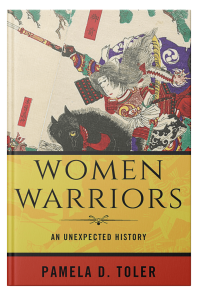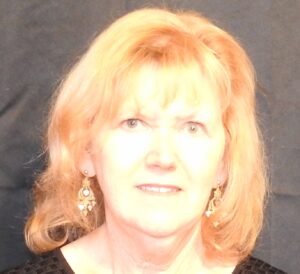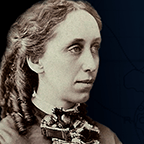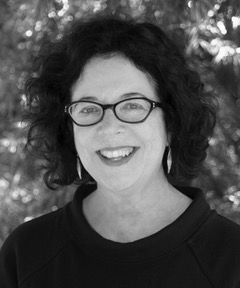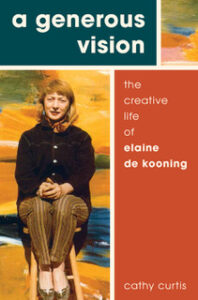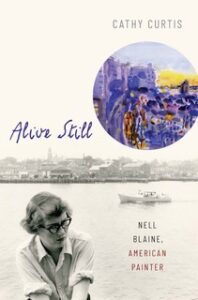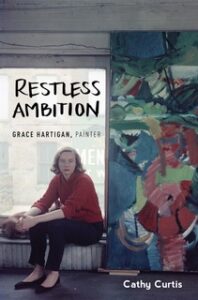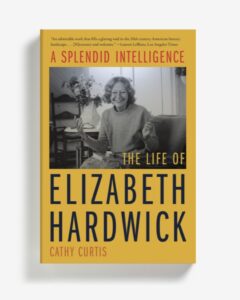Women in World War II: “French Army Drafts Plan to Enlist Women”
For the last few years, I’ve spent a lot of time reading and re-reading old issues of the Chicago Tribune, between 1919 and the end of the Second World War in pursuit of the subject of my current book. And as those of you who been with me on this journey know, in doing so I’ve stumbled across stories that don’t belong in the book but are too good not to share. (I’m looking at you, Fiume.)
Most recently I found a small article—a total of four sentences—that had more to do with my last book, Women Warriors, than with my current book.
One thing I discovered as I worked on that book is that periods of national crisis open up spaces in which women are able to play roles that society otherwise might not have allowed them to play. The Second World War offered unprecedented opportunities for women to enlist in the armed services. Great Britain, the United States and Germany all had women in uniform providing support services to their forces. Several hundred thousand women actively fought in the Soviet Union’s army as snipers, machine, gunners, tank crews, and antiaircraft personnel, not to mention as bombers, fighter pilots and navigators. (Who says women don't go to war?)
But what about France, you ask?
According to an article in the Chicago Tribune, on May 22, 1940, the French premier, Paul Reynaud, announced that French women between the ages of 21 nd 55 could now enlist as female auxiliaries of the armed forces—the French equivalent of WACs, WAVEs, WRENs and the like. Even if women swarmed the enlistment offices the next day,* it was too late for them to make a difference. German troops had crossed the border into the Ardennes on May 12 and were fighting their way toward Paris, which they occupied on June 14.
Personally, I like to think that many of the women who would have donned neat uniforms and “freed up a man to fight” instead became members of the Resistance.**
*Which they might well have done. They certainly hurried to sign up as Red Cross volunteers in the weeks after France and Britain declared war on Germany on September 3, 1939.
**If you’re interested in one woman’s involvement in the French resistance, I recommend The General’s Niece: The Little-Known DeGaulle Who Fought to Free Occupied France by Paige Bowers.
Come back on Monday for 3 Questions and an Answer with journalist and biographer Sara Fitzgerald who’s been researching untold stories of women since 1973.
Talking About Women’s History: Three Questions and an Answer with Nancy Kopp
Attorney and author Nancy Kopp is part of a two-woman team with an unusual women’s history project. They researched Lavinia Goodell, the first woman lawyer in Wisconsin, and created a website to tell her story.
Nancy grew up on a dairy farm about 10 miles from Janesville, Wisconsin. After graduating from a Milwaukee business college, she got a job as a legal secretary in Janesville. She has always enjoyed research and writing, and she discovered that she loved the law – which requires doing a lot of both – so she went back to school. She has a B.A. in history from the University of Wisconsin-Whitewater and a J.D. from the University of Wisconsin law school. She was in private practice at a large law firm for a few years but for many years has been employed by the Wisconsin Supreme Court as a Supreme Court Commissioner. Years ago she wrote five legal mysteries that were published as paperback originals by Penguin Putnam. She lives in Madison, Wisconsin and loves to travel – most often to historical sites, including many associated with Lavinia Goodell.
Take it away, Nancy!
What path led you to Lavinia Goodell? And why do you think it is important to tell her story today?
I first learned about Lavinia Goodell many years ago – before I went to law school – when I was working as a legal secretary in Janesville, Wisconsin. I was very surprised to discover that a Janesville woman had become Wisconsin’s first woman lawyer. The article I read referenced Wisconsin Supreme Court Chief Justice Edward Ryan’s condescending 1876 opinion refusing to allow Lavinia to appear before the court. I found the decision in our law office library and was infuriated to read that Ryan had denied Lavinia’s petition because, in his opinion, “the law of nature destines and qualifies the female sex for the bearing and nurture of the children of our race and for the custody of the homes of the world and their maintenance in love and honor. And all life-long callings of women, inconsistent with these radical and sacred duties of their sex, as is the profession of law, are departures from the order of nature; and when voluntary, treason against it.” Fortunately Lavinia did not take Ryan’s decision sitting down. She persuaded a male Janesville attorney, who also happened to be a member of the legislature, to introduce a bill changing Wisconsin’s statute to make clear that the legal profession was open to both sexes. That bill passed and was signed into law by the governor in 1877.
Since then I have thought of Lavinia as somewhat of a kindred spirit, and I have always felt that I – and all other women lawyers in the state – owe her a huge debt of gratitude for opening the profession to us. When a friend contacted me in 2018 to ask if I would be interested in doing more in-depth research on Lavinia, I jumped at the chance. I think it is important to tell Lavinia’s her story today to remind people, especially young women, that we all stand on someone else’s shoulders and no matter our profession or avocation might be, we are all benefiting from the hard work and perseverance of so many women who came before us. There are still many glass ceilings to be broken and many societal attitudes that need to be changed before women are truly viewed as equal to men in all walks of life. But hearing stories about women like Lavinia, who overcame enormous obstacles and prejudices to achieve their goals, might give young women today who are being told they ought to “stay in their lane” the grit they need to ignore the naysayers and keep going.
What do you find most challenging or most exciting about researching historical women?
I have found that the most challenging things about historical research are the astonishing amount of erroneous information that is available online and trying to decipher nineteenth century cursive script. These two issues converged when twentieth century folks began to digitize and catalog information. Misspellings of proper names are inevitable, and this presents a real challenge for a researcher. I have seen Lavinia’s name spelled Lavina, Lavona, Lavena and her last name also misspelled in multiple ways. Even the Wisconsin Historical Society’s death record index spelled her name wrong. I learned early on to approach every search using alternate techniques and multiple spellings. When trying to pinpoint where Lavinia lived and worked and the placement of various businesses that she frequented, I also discovered that many cities, including Janesville, Wisconsin, changed street names and renumbered buildings several times, the last time around 1915. In the 1870s, the Goodells lived at 29 South Academy Street. In order to determine the present day location of the house, I had to go through multiple Janesville City directories looking for families who lived on South Academy in the 1870s and still lived there in 1915. It took many hours, but I eventually determined that the Goodell’s house is now numbered 168-170 South Academy. Most articles about 1870s Janesville are unaware of the address changes, meaning that people looking for old sites go to the wrong place. In 2021 I developed two Janesville walking tours that take people past sites that played a role in Lavinia’s life and made sure to note the current location.
Reading 150 year old documents also requires enormous patience. The most frustrating document I encountered was four pages of notes from a court hearing after Lavinia died in which the people who witnessed her will testified about her state of mind at the time she signed the will. The court clerk must have scratched the notes down very quickly with a fountain pen. When I first looked at the document I could only make out a few words on each page. I had to go over it countless times before I finally figured out most of what it said. (There are still a few words that are a mystery.) Over time I became very familiar with Lavinia’s handwriting and her colloquial expressions. Her father, on the other hand, was born in 1792, and his script is exceedingly difficult to read.
I think the most exciting thing about historical research is making an unexpected, sometimes almost serendipitous find. We had known that during the Civil War, Lavinia helped her father publish an anti-slavery newspaper called the Principia. During one of my visits to Berea College in Berea, Kentucky, where the Goodell family papers are housed (because Lavinia’s nephew William Goodell Frost was the longtime president at Berea) I discovered that Lavinia had written dozens of articles and poems for the paper. I was able to access all of the issues of the Principia online and found her articles. That was a thrilling discovery. I doubt that anyone had read them in the last 140 years, but we are now sharing them on our website.
What was the most surprising thing you’ve found doing historical research for your work?
The most surprising thing I found came to light early in my research, and it is that the photograph of Lavinia Goodell that was featured in all previous articles and books mentioning her was not her at all. In the fall of 2018, through ancestry.com, I was able to make contact with several descendants of Lavinia Goodell’s eldest nephew. Virtually the first thing they told me was that back in 1959 one of their relatives had been asked for a photo of Lavinia and he sent off a picture of someone else. His daughter, Sarah Stamps of Nashville, Tennessee, who just died last year at age 95, saw the photo when it was returned and told him, “That’s not Lavinia.” The man responded that he was aware of that but said his photo of the real Lavinia was in poor condition and “This is a better looking woman anyway.” Ms. Stamps was a bit uneasy about the mix-up but she was busy raising a young family and decided the photo was unlikely to ever be disseminated so she did not try to correct the error at that time. Many years later Ms. Stamps was doing some family research online and, to her horror, she discovered that the picture of the “Faux Lavinia” was everywhere, including on a large plaque honoring Lavinia that had been installed in the Rock County Courthouse in Janesville, Wisconsin in 2000. Ms. Stamps and another relative made some efforts to correct the record but soon discovered that once erroneous information is on the web, it is very difficult to change it. Lavinia’s relatives were very pleased that we were researching their ancestor and urged us to try to “give her her real face back.” One of the most gratifying parts of our research project was doing just that. Through our website, social media accounts, and media accounts we have featured what we call the “case of mistaken identity,” and in December 2021, a new plaque bearing Lavinia’s true image was installed at the Rock County Courthouse. We would love to identify the woman in the “faux” picture. With assistance from another Lavinia relative, we have a good idea who it might have been but so far have not been able to definitively prove it. I have not given up on this quest and hope to be able to declare the case closed at some point.
A question from Nancy: My research over the last five years has focused largely on the time period from 1855 to 1880. Are there one or two women from that era that you particularly feel should be better known and why?
The thing that has caught my attention from the period is a type of institution that served women rather than an individual woman. American industrialists founded schools of design for women in northern cities in the decade or two before the Civil War. The curriculum was designed to train women in textile and wallpaper design, wood engraving, and other marketable artistic skills. It wasn't a purely philanthropic endeavor. Textile mill owners, for instance, wanted to produce homegrown talent to replace the expensive designs they previously purchased from France. I want to know more about the women who attended these schools and what they did after they graduated.
***
Want to know more about Lavinia Goodell?
Check out the website: www.laviniagoodell.com.
Like the Facebook page: https://www.facebook.com/LaviniaGoodell
Follow her on Instagram: @laviniagoodell
***
Tomorrow it will be business as usual here on the Margins with a women’s-history- related blog post from me. But we’ve still got more people talking about women’s history from a lot of different angles next week. Don’t touch that dial!
Talking About Women’s History Month: Three Questions and an Answer with Cathy Curtis
I’m pleased to start off this year’s Women’s History Month series with Three Questions and an Answer with biographer Cathy Curtis.
Cathy is a former Los Angeles Times staff writer with degrees from Smith College and the University of California, Berkeley. She is the author of three recent biographies of twentieth-century artists—Restless Ambition: Grace Hartigan, Painter; A Generous Vision: The Creative Life of Elaine de Kooning; and Alive Still: Nell Blaine, American Painter—all published by Oxford University Press. Curtis also has written A Splendid Intelligence: The Life of Elizabeth Hardwick (W. W. Norton), and Edna O’Brien: The Passionate Life of a Fearless Irish Writer (forthcoming).
Take it away Cathy!
How do you choose subjects for your biographies?
I look for an artist or writer whose work I admire, who led an eventful life, and who has an archive that is open for researchers. By now, having written five biographies (the fifth is still in manuscript), I’ve learned that the most important components of an archive for my purposes are the subject’s journals and letters (written and received), followed by newspaper and magazine interviews. Of course, I also look for letters from my subject in the archives of the people to whom she wrote.
One of the questions I’m fascinated with right now is how biographers name their subjects, particularly when writing about a woman. Where do you stand on the first name/last name question in your books?
I am not an academic, which perhaps explains why I was surprised to discover the existence of the first name vs. last name issue. I use my subject’s first name freely because I have “lived” with her every day while researching and writing my books. Employing the last name strikes me as the sign of an impersonal, arm’s-length relationship with a subject, better suited to a book with a theoretical or critical approach than to an intimate biography. The notion that first-name references are somehow demeaning to a subject (whether male or female) strikes me as ridiculous. My respect for my subjects is clear from the context of the book.
You've written about a number of interesting women. Do you have a favorite?
My favorite subject tends to be the last one I’ve written about, in this case, the great Irish author Edna O’Brien. But each of my subjects have endeared themselves to me in a different way, often by means of overcoming a significant obstacle.
Grace Hartigan, who never attended art school, struggled to master the painting medium, ultimately developing a memorable abstract style. Elaine de Kooning found her niche in a painting genre (portraiture) that her famous husband, Willem de Kooning, had largely abandoned in favor of abstraction. The painter Nell Blaine prevailed against enormous odds after becoming a paraplegic in her late thirties, by simplifying her canvases and loosening her technique. The author Elizabeth Hardwick kept writing her deeply considered essays despite the ongoing stress of coping with the mental illness of her celebrated husband, the poet Robert Lowell.
By the way, I was intrigued to discover that none of these women were outspoken feminists: they all viewed themselves essentially as independent agents. Women artists who managed to carve out careers in the 1950s tended to believe that superior work would triumph, so there was no need to give women a special break. For Elizabeth Hardwick, great art always trumped ideology; she disparaged the novels of feminist writers that were poorly written. She also believed that women’s great strength is fortitude, a quality that allows them to carry on in the face of disappointment and hardship.
A question from Cathy: What overlooked woman from the past would YOU like to read about in a biography, and why?
A once famous and now largely forgotten artist/writer named Rose O'Neill (1874-1944). She was the creator of the Kewpie doll, based on her cartoons with the same character, and the first person to license characters of her own creation on an international scale. (Think of her as a predecessor to Walt Disney in some ways.) She was famous, productive, and connected to lots of famous artists. She was active in the suffrage movement--and made pro-suffrage Kewpie cartoons. She became rich thanks to her work, and died in poverty. I was exploring the possibility of a book when my current subject, Sigrid Schultz, grabbed me by the lapels and said “My turn!”
* * *
Want to know more about Cathy Curtis and her work? Check out her website: www.cathycurtis.net
***
Come back tomorrow for three questions and an answer with attorney and author Nancy Kopp, talking about her work on the first woman attorney in Wisconsin. Good stuff!
